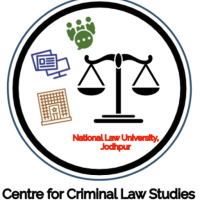
-By Kirti Meena and Sandli Pawar
Introduction
Section 295A of the Indian Penal Code, 1860 has become a catchword in the context of any real or reel issue related to hurting religious sentiment. Section 295A criminalises any deliberate or malicious act intended to offend the religious sentiment of any class of people. The Section mandates imprisonment for 3 years and/or fine and is a non-bailable offence. Every now and then, a case related to the violation of Section 295A has been filed in India. In the recent past, three back to back cases, the Munawar Faruqui case, the Tandav web series, and A suitable boy web series, were filed under Section 295A which garnered the attention of national media. Considering the wide-ranging ramification of Section 295A on the liberty of an accused and the exponential increase in the number of cases filed, we aim to analyse what Section 295A aims to criminalise.
In this post, we discuss two important principles of criminalisation i.e., Harm and Offence Principle and their interaction with religious hate speech. Analysing the judgments of the Supreme Court which are rendered from both the approaches, we conclude that a holistic approach is more suitable to deal with cases arising under Section 295A, IPC.
Harm Principle vis-a-vis religious hate speech
The Harm Principle was proposed by James Mill as the only justification for curbing the right to free speech, in other words, any interference with personal liberty is justified only if it prevents direct harm to another person. However, Mill qualifies this immunity of free speech and expression primarily through two restrictions – first, instigative speech and second, indecent conduct in public. We are concerned only with the former in this article. Mill asserts that any speech loses its immunity if it is expressed in such circumstances to constitute an instigation or incitement to commit a mischievous act that may lead to harm to others and hence, maintenance of public order outweighs free speech. One must note that Mill did not restrict the harm just to cover a physical injury. If a speech is expressed in a way to stigmatise or threaten a certain social group, then such a speech can be restricted on the grounds of emotional harm as well. This forms the basis of legislation prohibiting incitement to religious hatred.
Section 295A was designed to protect religious feelings, however, courts have applied it, as a Harm Principle, to ensure the maintenance of public order. For instance, in Ramji Lal Modi v State of U.P, the Court while expounding the constitutionality of the Section 295A held that: it only punishes an aggravated form of insult to any religion when it is done with a malicious intention to outrage the religious feelings.However, the calculated tendency of such insult is to disrupt the public order.
It was held that the calculated tendency of any speech aiming to offend religious sentiments was to disrupt public order. The court upheld the constitutionality of Section 295A by construing it as a public order maintenance section. Thereby, giving it the tutelage of the exception to Article 19(1)(a) (i.e., Freedom of Speech and expression) of the Constitution i.e., public order. Here the court has looked at the purpose of Section 295A, from a broader perspective, to prevent the only serious harm possible in such scenario i.e. disruption of public order. Being offended is not regarded as being harmed in this approach. The purpose of ‘protecting religious sentiment’ was made secondary in favour of the public order defence. This position has been reaffirmed in a recent case of Mahendra Singh Dhoni v Yerraguntla Shyamsunder and anrs.
Deploying this approach not just militate against the purpose of this section but also give government a wide leeway to restrict speech. Accordingly, if the government could show any proximate link between speech and disruption of public order, then such speech can be restricted. In terms of free speech, this is called heckler’s veto wherein critical speech is restricted by socially powerful group by threatening public disturbance. Recently in Shreya Singhal v UOI, it was held that only ‘incitement to violence’ can be restricted under the reasonable restriction of public order. However, Section 295A being an ‘over-broad law’ – often encapsulates within itself even the legitimate speech- makes it difficult to interpret ‘intentional insult to religious sentiments’ as an equivalent to incitement to lawless action.
Offence Principle vis-a-vis religious hate speech
Inadequacies and ambiguity associated with the term ‘harm’ gave rise to this Principle. Fienberg categorically suggests that offence is less serious than harm however, asserts that alike ‘harm’, it refers to a disliked mental state caused by the wrongful conduct of others. One is offended when (i) one suffers a disliked state (ii) this state is attributed to the wrongful (right-violating) conduct of another (iii) one is resentful of the wrongful conduct of the other. In such a case, what may be offensive to one may not be so for another. Therefore, only the serious offences including the speech designed to vilify and offend the sensibilities of any target group to such an extent that the offence is morally at par with physical pain.
The connection between public order and Section 295A has been eroded, over the years. For instance, in Sri Baragur Ramachandrappa & Ors v State of Karnataka, the court dealt with the issue of banning an award-winning Kannada novel, dealing with the life of a revered Saint, on the grounds of violating Section 295A. The court said:
‘No person has a right to impinge on the feelings of others on the premise that his right to freedom of speech remains unrestricted and unfettered. It cannot be ignored that India is [a] country with vast disparities in language, culture and religion and unwarranted and malicious criticism or interference in the faith of others cannot be accepted.’
It upheld the ban as a certain segment of the book infuriated a class of people who revered Saint Basaveshwara. In this case, a particular section certainly suffered from a disliked state of mind, primarily due to the offender’s wrongful conduct i.e., malicious criticism of their faith. Therefore, the court primarily relied on the Offence Principle by confining the issue to people’s feeling towards ‘sacred’ in religious belief that is susceptible to offence. The public order was not of the concern here, in fact, what was being punished was allegedly anti-religious sentiment.
‘Outrage’, ‘disgust’ and ‘offend’ are quite vague and subjective terms which often lead to over-criminalisation under this section. For instance, even a speech containing true statement could be banned if it outrages religious feelings, as held in Khalil Ahmad v State. Similarly, in this case, the element of ‘malicious intention’ has been diluted so much so that presence of malice can be presumed even if there is no lawful justification. Scholars, artists and authors would land in trouble with such an approach. Moreover, restriction of speech solely on grounds of ‘outrage of religious feelings’ without public disorder is not constitutionally valid as it does not fall within the reasonable restrictions as provided under Article 19.
Conclusion
The Supreme Court while dealing with the cases related to Section 295A has limited its analysis to only viewing Section 295A from either Harm Principle or Offence Principle. Taking only the former will militate against the purpose of the section and viewing it only from the Offence Principle approach would turn the section quite narrow and subjective. The courts should include both Harm and Offence Principle for determining criminal liability under Section 295A.
While determining criminal liability on the anvil of breach of peace, the courts must also assess whether such breach was justifiable or excusable. Also, there must be a real threat to public order. However, for criminalisation under Section 295A, maintenance of public order must not be an end itself; instead, it should act as a standard to differentiate between the two offences. Thus, the extent, degree and reasonableness of the offence must also be determined in the backdrop of public order. Therefore, the standard that should be adopted to deal with the cases under Section 295A must be two-fold: assessment of (i) the offence and (ii) its tendency to breach the public order.
[The authors of the article are 2nd year students at National Law School of India University, Bangalore]

